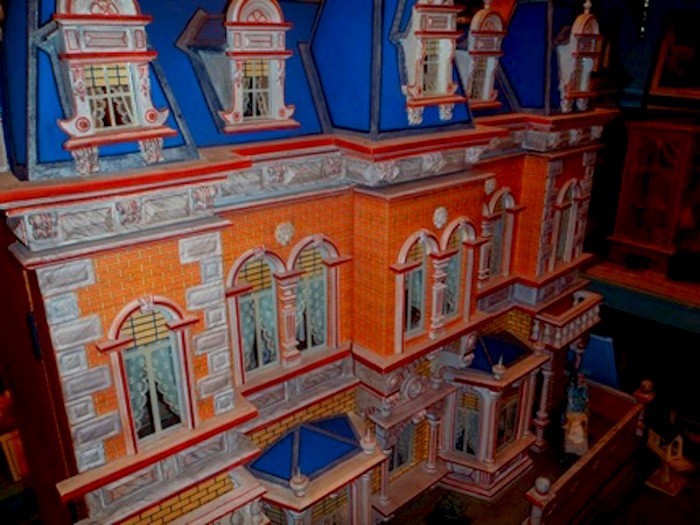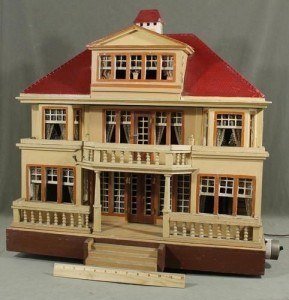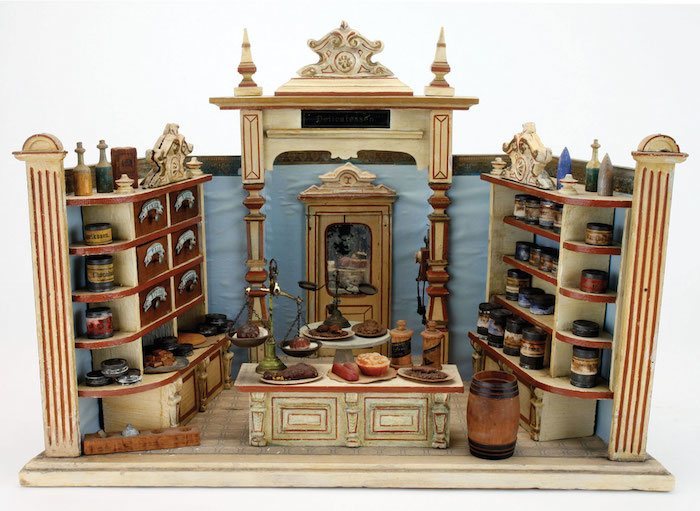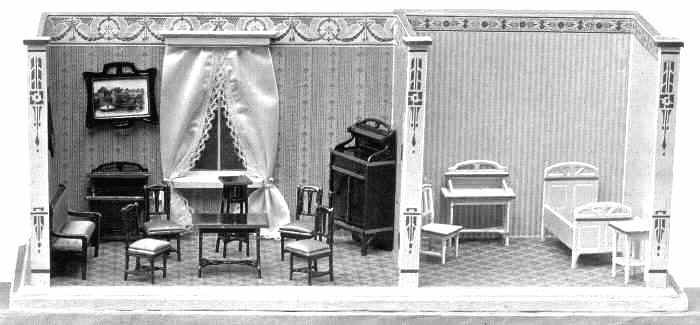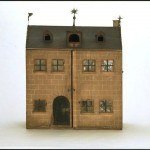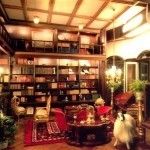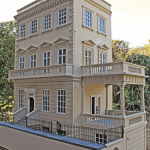Gottschalk Dollhouse Miniatures
The early European dollhouses were each unique, constructed on a custom basis by individual craftsmen. The industrial revolution changed all that. Factories began mass-producing toys, including dollhouses and their furnishings. A major German company in the trade was the Gottschalk Werke GMBH.
In The Beginning
In 1865 Moritz Gottschalk founded a bookbinding shop in the small town of Marienberg, which would be in Communist East Germany a century later. Like many isolated towns, the company produced various consumer products, including toys and dollhouses. In 1875 the railway came to Marienberg and the factory grew larger and larger as an export market developed. England, France, the Netherlands, Scandinavia and America. Soon, Gottschalk dollhouses could be found all over the world. In some capitals there were showrooms of his products and in the USA there was an agency of his firm. Moritz Gottschauk’s dollhouses were world famous.
All The Eras
The architectural styles of each period were transferred to the miniature houses. The wooden dollhouses were often pasted with lithographic paper, which imitated the facades of the different time periods. Windows at the sides of the building were sometimes only drawn on the paper.
The roofs were distinctive. At first they were only blue; red roofs were added after World War I, about 1919. Many dollhouses were marked underneath with a number which can be found in the catalogues.
Anything You Want
Gottschalk made many types of miniatures, from the abundantly decorated to bare shells for the decorate-it-yourself market. There were huge and luxurious dolls mansions with electric lights and small cottage, houses with a doll’s elevators, pull-out or hinged gardens, moveable awnings. Room boxes of all types: rigid or foldable, kitchens, school rooms, baths, stables, garages, shops of any kind from the butcher to the apothecary, the magnificent pastry shop with a café to a grand department store, or a market hall, a farm, a house boat, an airport, a theatre or a garden with pavilions. The Gottschalk catalogues was enormous.
Dollhouse As A Play-Toy
The Gottschalk dollhouses were built for children to play with. They were of solid wood construction and the furniture was equally sturdy. Today, the remaining classical miniatures are ideal to decorate with more delicate furniture and accessories.
War Years
During the two world wars production stopped. After WWI it took some time before a new catalogue was published, and the first catalogues assumed the pre-war style. But after 1923 there were only newly designed models to be found in the catalogues.
After WWII, this toy manufacturer found itself behind the Iron Curtain. The Soviets disassembled large parts of still existing factories to ship them to the Soviet Union as a form of reparations. Nevertheless, in 1947 the Moritz Gottschalk company was back in the dollhouse business.
The End
The end of the long-established firm came in 1972 when all remaining private enterprises of the German Democratic Republic were dispossessed and nationalized. Toy companies were incorporated in the nationally-owned enterprise VERO. For some years they continued to build single toy parts in Marienberg, then the historic factory was partly destroyed by a fire. The remaining buildings were demolished in 1999 to make room for a sports hall.
Jennifer McKendry has put together an amazing website of dollhouse miniatures. Take the time to see all eight galleries. It’s worth it!
Susan


